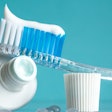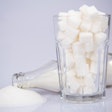
Researchers measured the pH and fluoride levels of 460 tea beverages and found that most had a pH level that could increase the risk of enamel erosion. They presented their findings on June 22 at the 2019 International Association for Dental Research (IADR) meeting in Vancouver, British Columbia.
In the U.S., more than 3.8 billion gallons of tea were consumed in 2018, according to the Tea Association of the U.S.A. As it can be difficult to find nutritional data, researchers tested the pH and fluoride levels of 460 tea beverages in the Chicago area and found that the green, herbal, and oolong teas tested had the highest pH levels. The research was led by Constanza Fernández G., DDS, PhD, an assistant professor at the Midwestern University College of Dental Medicine-Illinois in Downer's Grove, IL.
The study included seven types of tea and eight flavor categories, and the researchers prepared either one tea bag or 2.0 ± 0.05 g of tea in 200 mL of boiled deionized water for five minutes and evaluated ready-to-drink beverages in duplicate. They also prepared four samples in triplicate with fluoridated tap water.
The researchers used previously calibrated fluoride-ion selective electrodes and pH electrodes for sample analysis.
The tea products exhibited a considerable variation in fluoride and pH levels:
- The overall fluoride concentration was 1.49 ± 1.51 µg/mL [mean ± standard deviation], with a minimum of 0.00 µg/mL and a maximum of 8.95 µg/mL.
- The overall pH was 4.88 ± 0.94, with a minimum of 2.60 and a maximum of 6.97.
Black, green, and oolong teas had the highest concentrations of fluoride, while herbal infusions had the least. Samples prepared with fluoridated tap water increased the fluoride content by 0.76 ± 0.01 µg/mL, regardless of the tea.
Green, herbal, and oolong teas had the highest pH levels, ranging from 4.95 ± 1.13 to 5.25 ± 0.19, while fruit-flavored tea had the lowest at 4.20 ± 0.99.
The tested teas could potentially increase the risk of dental erosion, the researchers concluded, but they also noted that most black and green teas were a natural source of fluoride.



















